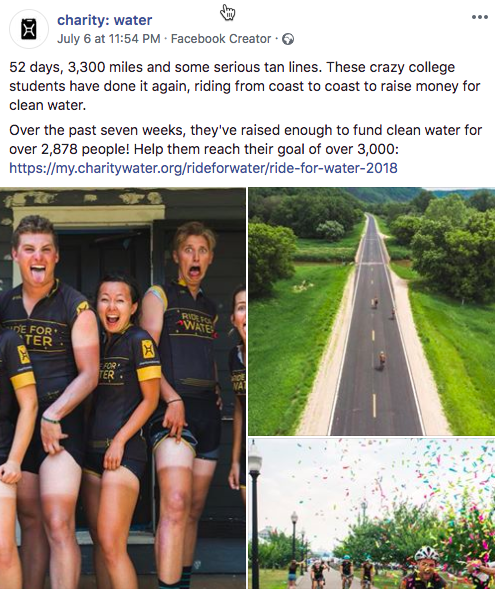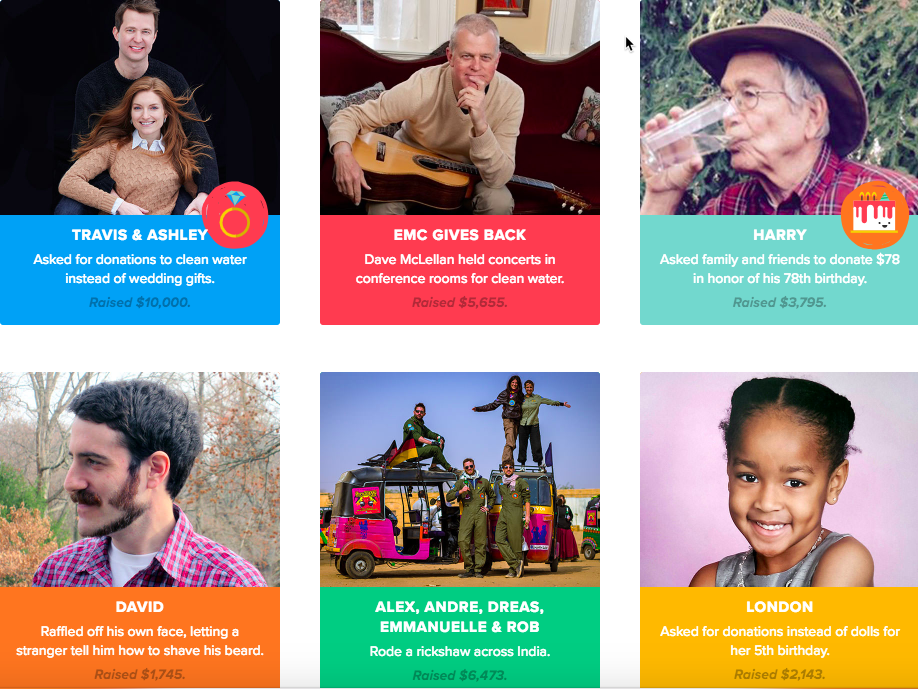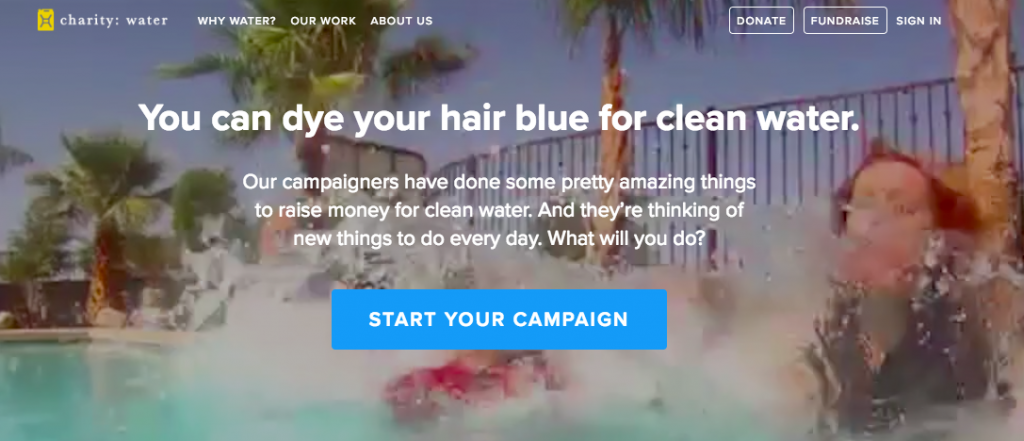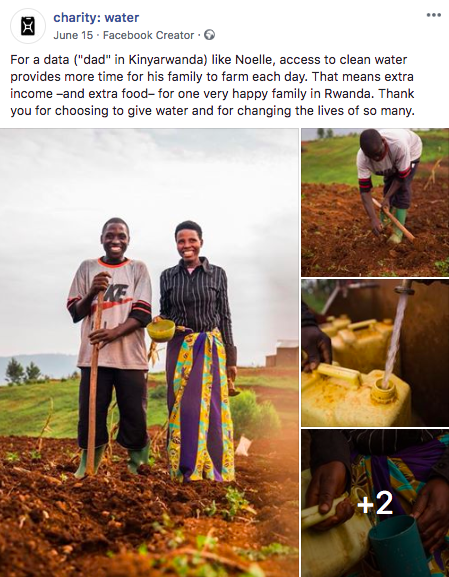Six steps to building a community for your non-profit
Every non-profit has an audience. But there’s a huge difference between an audience and a community. An audience is one-way. An audience is passive. An audience doesn’t participate, share or encourage others to take action.
A community, on the other hand, is a two-way conversation. A community is social, interactive, inspiring. It’s every non-profit’s dream.
And some non-profits achieve it thanks to their ability to inspire people and to encourage a sense of community. A community where supporters can share their stories and experiences and connect with like-minded people. A community where they feel like their collective effort is making an impact.
So how can you turn your passive audience into a strong, social, thriving community? Start with these six steps.
1. Become a member of your community
Nobody likes to be a member of a community that seems to be run by a robot. A robot that is absent and rarely engages with its people or addresses their questions and concerns.
But a group that’s run by a leader who inspires, supports, recognises and engages with fans, volunteers, supporters? Now that is more likely to enjoy a strong sense of community.
So, the first step to building your community? Becoming one of its key members.
Be human. Get involved. Show how much you care by asking and answering questions, and responding to comments.
When you take the time to listen and to interact with your community members, you’re not only showing that you appreciate their input and support, but also that the people and the cause come before your organisation.
2. Get to know your members
You can’t inspire people if you don’t know much about them, their interests, passions, fears, motivations.
So start by recognising what resonates with the supporters you already have. Create relevant content that captures what your supporters like, whether it’s blog articles, videos, case studies, interviews, infographics, podcasts, and publish it on your blog and website. Then use social media platforms like Facebook, Twitter, Instagram, to share that content with your audience.
Thanks to social media analytics tools, which you can learn how to use by taking our free social media course, you can see how well your content is performing. So if something you post doesn’t garner the response you were expecting, you can try again until you find what works.
Pay attention to how your community responds to every piece of content you’re sharing. Are they liking, reacting, retweeting, sharing, or commenting on what you’re sharing? Listen to their responses and see how you can refine your strategy to get better engagement.
In addition, use tools like TweetDeck, Social Mention or Mention to monitor what’s being said online about your non-profit, the campaigns you’re running, the causes you’re supporting or the hashtags that you’re using or are connected to your organisation or causes.
By listening to what your community is talking about online you can get more insight into who the members of your community are, what they like and dislike, and what inspires them to take action. As a result of this research, you’ll be better at crafting messaging and content that resonates with your community.
Here is a good example by the Malala Fund, which ran a campaign that encouraged supporters to announce what they were #strongerthan, leading up to Malala’s birthday on July 14th.
https://www.youtube.com/watch?v=ZrXVLN1kTtE#t=15
The campaign generated a huge response and massive participation across various social platforms, particularly Twitter. Why? Because the community resonated with the message and the cause.
3. Teach your volunteers to amplify your messages
Your volunteers are already supporters of your non-profit. They resonate with your mission and causes. And they’re probably using social media, too. So why not encourage them to get their own social media following and friends involved?
This doesn’t mean having them share your content or speaking on behalf of your organisation. But creating their own communities where they educate and inspire their friends and social media connections.
4. Show how volunteers or regular people are helping in a big way
charity:water recognises their supporters by highlighting them in communications and social media.
Here are a few examples from their Facebook page and their website where they feature regular people who are helping in a big way:


And here’s another great example of volunteer appreciation from Team Rubicon, an emergency response organisation made up of veterans:
![]()
Shining a spotlight on your online community members and their contributions to your causes is a fantastic way to make them feel welcome, appreciated and part of something larger than all of you.
It also helps to give them a sense of belonging and responsibility to your shared cause, which means they’re more likely to encourage others to do the same.
In addition to all these benefits, featuring your supporters and volunteers also entices others to get involved and become members of your community.
5. Show off your fun side
More and more non-profits are experimenting with community-building events and activities like scavenger hunts, races and brewery hangouts.
These types of events are not only fun and help to bring like-minded people together but non-profits are also able to raise awareness on a much larger scale.
Remember the Ice Bucket Challenge where people would dump a bucket of ice and water over a person’s head to promote awareness of MND? The campaign went viral on social media during July-August 2014.

Or Movember, the annual event involving the growing of moustaches during the month of November to raise awareness of men’s health issues?
Charity:water even has a dedicated page where they give people all sorts of fun ideas that they can turn into a fundraising campaign, like jumping in cold water or shaving your head. Or even dyeing your hair blue!

What fun events and activities can you organise to bring people together and also to create some buzz around your case?
6. Tell real, human stories
If there’s one thing that brings people together, that helps them understand and get behind supporting a cause, it’s a real, human story.
So if you want to build a community, you need to humanise your organisation and the purpose of your cause(s).
Again, charity:water is incredible at this. They understand how powerful stories are, which is why every piece of content they publish on their site and blog, and every post they share on social media is an inspiring story that makes people want to get involved.
Here are just two of many examples:


So use text, pictures, videos, audio to tell a powerful story, to get people involved and to help them see themselves in your story. When they do, they’ll want to become part of it.
Wrapping up
The best advice we can offer to help build a community for your non-profit is to be authentic, personal and helpful.
If you can humanise your organisation and the causes you support, if you can get down and walk into the crowd (as opposed to standing on the balcony and shouting your message onto the people below), and if you can speak to people like you would a friend, then you’ll have a better chance at building and growing your community organically.
